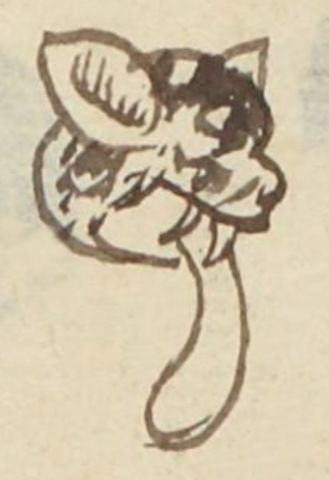Ocelotl (MH505v)
This black-line drawing of the simplex glyph for the personal name Ocelotl (jaguar) shows the head of the animal in profile, looking toward the viewer's right. It has a mottled coat, large rounded ears, a large and open eye, sharp fangs protruding from its mouth, and an unusually large and protruding tongue that curves toward the end.
Stephanie Wood
The human tongue was a self-sacrificial site for blood letting (see tlacoquixtia, below). Perhaps this is why animal tongues captured considerable attention from Nahua painters. If one searches the word tongue in the Quick Search box, one will find other examples of jaguars, dogs, eagles, a worm, a bat, a coyote, and especially snakes with protruding tongues.
Stephanie Wood
matheo
ocelotl
Mateo Ocelotl
Stephanie Wood
1560
Jeff Haskett-Wood
jaguars, jaguares, tongues, lenguas

ocelo(tl), a jaguar, or an ocelot, https://nahuatl.wired-humanities.org/content/ocelotl
Matrícula de Huexotzinco, folio 505v, World Digital Library, https://www.loc.gov/resource/gdcwdl.wdl_15282/?sp=90&st=image
This manuscript is hosted by the Library of Congress and the World Digital Library; used here with the Creative Commons, “Attribution-NonCommercial-ShareAlike 3.0 License” (CC-BY-NC-SAq 3.0).






